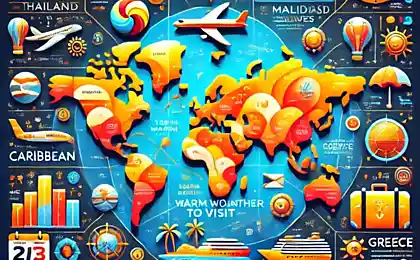175
Meteorologists and weather
Personal weather sensation is formed on the basis of the body’s perception of temperature and humidity, wind speed and precipitation, as well as on the basis of the opinion of meteorologists.
Most weather forecasts, besides the usual indicators, include a measure of "feelings", which is formed by meteorologists based on complex calculations taking into account a variety of weather factors. For example, AccuWeather has its own proprietary formula, RealFeel. Similar technologies exist in many other weather stations, and they are mostly called “feels like”. Whatever the name of this indicator, its goal is to convey to you how you will actually feel the temperature of the air, despite its real value.
The technology of measuring “feelings” is not new. Everyone knows that strong winds can make you feel cold. However, until the mid-1940s, no one tried to assign a numerical value to it, until Antarctic researchers turned their attention to the fact that strong winds can freeze water at temperatures above normal. They conducted an experiment using plastic bottles of water in which the liquid froze under various wind and temperature combinations. As a result, the researchers formed a table in which they could compare the readings of the thermometer and the temperature that can be felt while in open space. However, this table did not take into account many factors, such as clothing, activity and physique.
Decades later, other researchers tried to measure perceptual temperature in a different way. Just like wind, air humidity has an effect on the body’s sense of temperature. In 1978, researcher George Winterling developed the "heat index" in an attempt to account for this effect. Air always contains a certain amount of water vapor, which begins to condense at a certain temperature, called the dew point. The higher it is, the more humid the air. The study of air humidity and dew point made it clear that these indicators also affect a person’s perception of temperature.
Wind and the "heat index" have given meteorologists two thoughts. The first is that it is possible to quantify the “feeling” of temperature that people experience under different weather conditions. Second, more meteorological data should be taken into account to more accurately calculate this indicator. Combining the wind and the "heat index" is the basic way to determine the "feels like" temperature. However, it is not only external conditions that shape the human perception of weather.
For example, RealFeel technology, owned by one of AccuWeather’s most famous weather stations, uses not only wind and humidity, but also a host of other external data, such as season, vegetation, geographic location and more. Mike Steinberg, a meteorologist at AccuWeather, and colleagues built a model of RealFeel based on human biology. This model shows the temperature felt by an ordinary physically developed person of a standard build, dressed for the weather.
To calibrate its model, RealFeel specialists conducted a survey of users. But even considering the physics, observed data and user surveys, Steinberg acknowledges some of the flaws in RealFeel’s technology.
To date, more than 100 different “feels like” measurement systems have been recorded. Each system has advantages over others, but none is perfect. The “feels like” indicator was introduced to give a general idea of what temperature a group of people living in the same geographic area would feel. Everyone will feel the temperature in their own way.
Source: hi-news.ru
Source: /users/1617
The properties of exoplanets can be determined by the catalog created by the graduate
Solar Boom: First Solar Panel Shortage Since 2006























